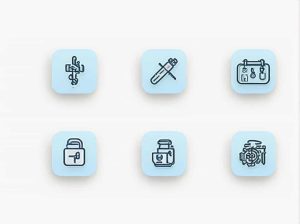In todays diverse classrooms, students come from a wide range of cultural and linguistic backgrounds. To ensure effective learning, educators must adopt Culturally and Linguistically Responsive Teaching and Learning (CLRTL) strategies. This approach acknowledges students’ unique experiences, languages, and cultural perspectives, making education more inclusive and meaningful.
This content explores the importance of culturally and linguistically responsive education, its core principles, and effective strategies that teachers can implement to support student success.
What Is Culturally and Linguistically Responsive Teaching and Learning?
Culturally and Linguistically Responsive Teaching and Learning (CLRTL) is an educational approach that recognizes and values the cultural and linguistic diversity of students. It integrates students’ cultural backgrounds and languages into instruction, making learning more relevant and engaging.
This method helps educators:
- Acknowledge students’ cultural identities in the learning process.
- Adapt teaching techniques to support multilingual learners.
- Create inclusive classrooms where all students feel valued.
- Improve student engagement and academic achievement.
Why Is CLR Teaching and Learning Important?
Education is most effective when it connects with students’ lived experiences. CLR teaching and learning ensures that:
- Students feel a sense of belonging, increasing motivation.
- Instruction is relevant to diverse cultural perspectives.
- Language barriers are addressed, supporting English learners (ELs).
- Teachers reduce biases and stereotypes in the classroom.
Core Principles of Culturally and Linguistically Responsive Teaching
1. Cultural Awareness and Sensitivity
Educators must develop cultural competence by understanding students backgrounds. This means learning about:
- Different cultural norms and traditions.
- The impact of cultural identity on learning.
- How to avoid cultural biases in instruction.
2. Asset-Based Approach
Instead of viewing linguistic and cultural differences as barriers, teachers should recognize them as strengths. A students native language and cultural knowledge can enhance learning when incorporated into instruction.
3. High Expectations for All Students
Every student, regardless of their background, has the potential to succeed. Teachers should:
- Set high academic expectations.
- Provide equitable learning opportunities.
- Encourage growth mindset and resilience.
4. Culturally Relevant Curriculum
The curriculum should reflect diverse voices and perspectives. This includes:
- Using multicultural literature and historical accounts.
- Including examples from various cultures in math, science, and social studies.
- Discussing global perspectives on key issues.
5. Linguistically Inclusive Instruction
For English learners (ELs) and students who speak multiple languages, instruction should:
- Support bilingualism and translanguaging.
- Use scaffolding strategies, such as visuals and graphic organizers.
- Encourage peer discussions in multiple languages when possible.
Effective Strategies for Culturally and Linguistically Responsive Teaching
1. Build Strong Relationships with Students
Creating a safe and supportive classroom starts with knowing students personally. Teachers can:
- Learn about students cultural backgrounds and traditions.
- Encourage students to share their experiences through storytelling and projects.
- Foster respectful communication among classmates.
2. Use Multicultural Materials
To create an inclusive classroom environment, teachers should:
- Select books and resources that reflect different cultures and languages.
- Incorporate music, art, and history from diverse backgrounds.
- Avoid materials that reinforce stereotypes.
3. Incorporate Students Languages in Learning
Even in English-dominant classrooms, students native languages can be a valuable tool. Teachers can:
- Allow students to use their home languages in discussions and assignments.
- Provide bilingual glossaries or translated materials.
- Encourage peer tutoring among students who share a common language.
4. Implement Differentiated Instruction
Not all students learn the same way. Differentiated instruction allows teachers to:
- Adapt lesson plans to different learning styles (visual, auditory, kinesthetic).
- Use small group instruction for targeted support.
- Offer choice-based assessments, such as projects or oral presentations.
5. Use Culturally Relevant Examples
Teachers should connect lessons to real-world cultural experiences. Examples include:
- Using math problems based on students’ community experiences.
- Exploring science contributions from various cultures.
- Analyzing historical events from multiple perspectives.
6. Encourage Collaborative Learning
Group activities help students:
- Share cultural perspectives with peers.
- Learn from each others linguistic strengths.
- Develop teamwork and problem-solving skills.
7. Address Implicit Bias and Stereotypes
Teachers should reflect on their own assumptions and actively:
- Avoid generalizing students’ abilities based on cultural background.
- Challenge stereotypes in textbooks and media.
- Promote equity and fairness in grading and discipline.
Challenges in Implementing CLR Teaching and Learning
1. Lack of Resources and Training
Many educators lack professional development in culturally responsive teaching. Schools should provide:
- Workshops and training on diversity and inclusion.
- Access to multicultural teaching materials.
2. Standardized Testing Limitations
Traditional assessments may not accurately measure diverse students abilities. Schools should:
- Use alternative assessments, like portfolios or oral exams.
- Allow students to demonstrate knowledge in multiple ways.
3. Language Barriers
For English learners, navigating school systems can be challenging. Schools can:
- Provide ESL (English as a Second Language) support programs.
- Offer parent communication in multiple languages.
4. Resistance to Change
Some educators may be unfamiliar or uncomfortable with culturally responsive teaching. School leaders should:
- Encourage a growth mindset among teachers.
- Share success stories of CLR teaching in action.
Benefits of Culturally and Linguistically Responsive Teaching
1. Improved Academic Performance
When students see their culture and language reflected in lessons, they are more engaged and motivated.
2. Stronger Student-Teacher Relationships
Building cultural connections fosters trust and mutual respect.
3. Higher Self-Esteem and Confidence
Students feel valued and empowered when their identities are celebrated.
4. Preparation for a Diverse World
Culturally competent students are better equipped to thrive in a globalized society.
Culturally and Linguistically Responsive Teaching and Learning is not just a strategy its a necessary shift toward equity in education. By embracing students cultural and linguistic diversity, teachers enhance learning experiences, foster inclusivity, and prepare students for success in a multicultural world.
Educators who adopt CLR teaching create classrooms where all students thrive, regardless of their background. Through meaningful relationships, culturally relevant materials, and inclusive teaching methods, we can build a more just and effective education system for future generations.



